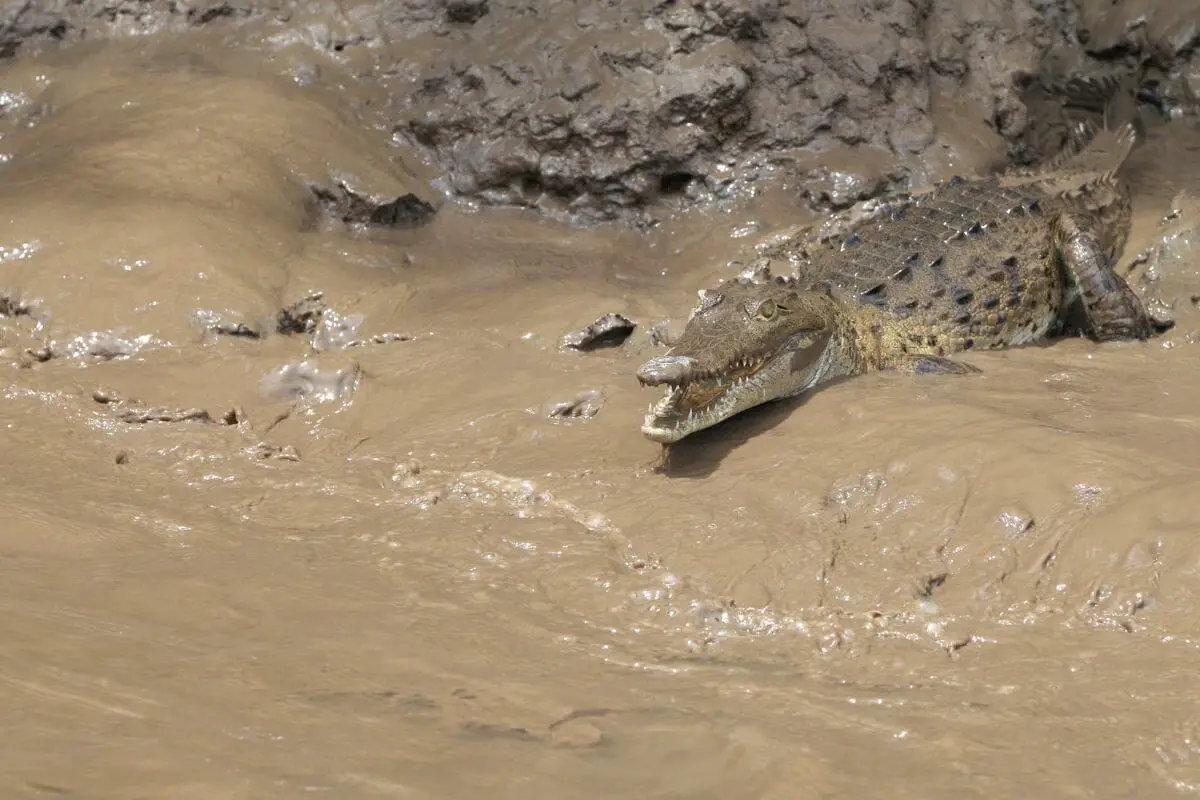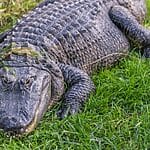21 Common Dangerous Animals in Thailand: Be Aware
Thailand is known for its stunning landscapes and vibrant culture, but the country is also home to a variety of dangerous animals. Travelers and locals alike may encounter threats from creatures that are not just a nuisance but potentially life-threatening.
From venomous snakes slithering through the dense jungles to aggressive crocodiles lurking in rivers, these encounters can turn a dream vacation into a nightmare. One fact to note: Thailand is home to over 200 species of snakes, with 60 of them being venomous.
The reality is that many visitors may not be fully prepared for these dangers. In this guide, we will uncover the most dangerous animals in Thailand and how to stay safe when exploring this beautiful yet wild destination.
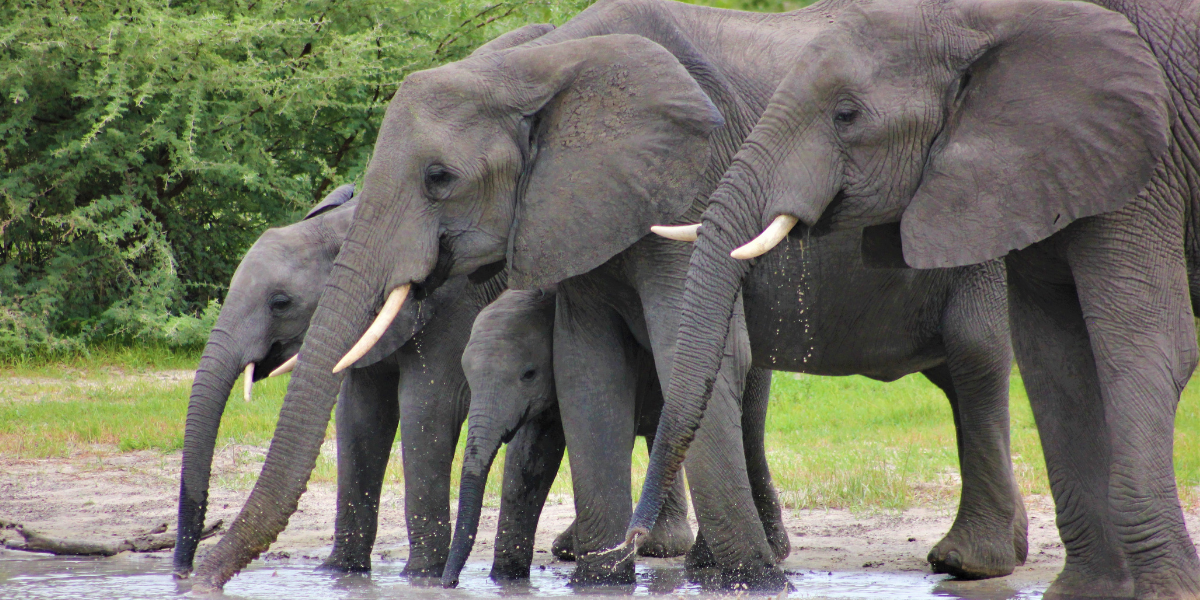
Let’s Explore the 10 most common dangerous Animals in Thailand
Check out 10 most common dangerous animals in Thailand.
Giant Centipedes
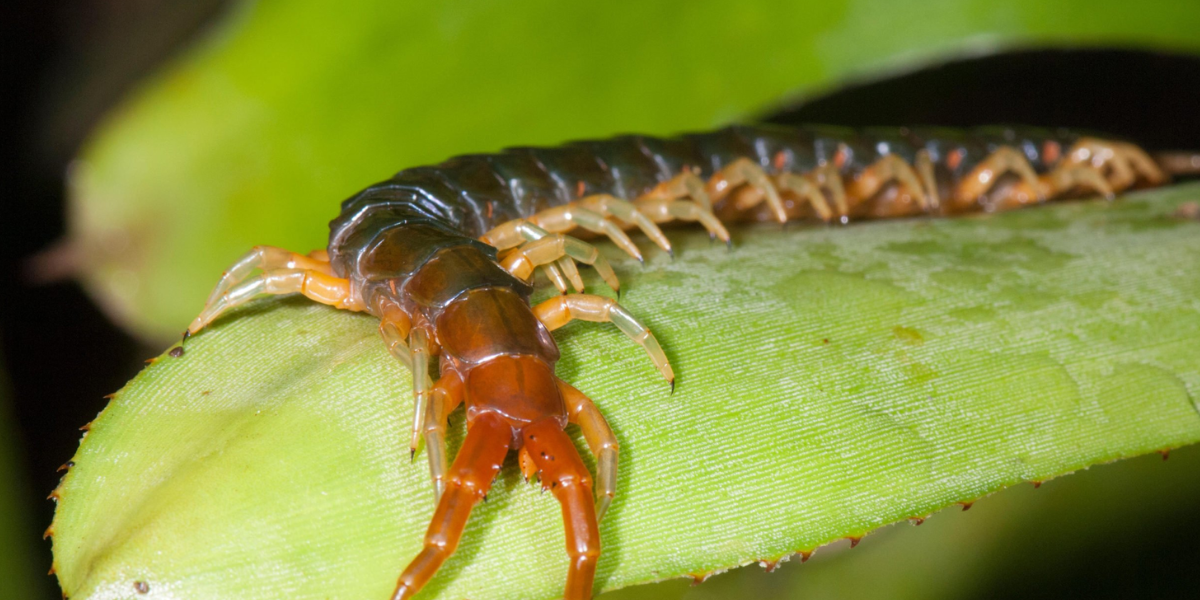
Giant centipedes are found in tropical and subtropical regions around the world. They are the largest centipedes in the world, with some species reaching up to 12 inches in length.
Giant centipedes are carnivores and they eat a variety of small animals, including insects, spiders, frogs, lizards, and even small mammals. They have a venomous bite that can be fatal to small animals, but it is not usually fatal to humans.
Giant centipedes only socialize to find their mate. The female lays a set of eggs, which hatch into tiny centipedes.
The young centipedes grow rapidly and they reach maturity within a few months. These centipedes are not considered to be endangered or threatened species.
Box Jellyfish

Box jellyfish are common dangerous animals in Thailand that are found in warm, tropical waters around the world, but they are most common in the Indo-Pacific region. They are known for their potent venom, which can be fatal to humans.
Box jellyfish are carnivores and they eat a variety of small animals, including fish, shrimp, and crabs. They use their tentacles to capture prey, and they inject venom into their victims with their stingers.
Box jellyfish come together to mate, and after mating, the female box jellyfish lays her eggs on the ocean floor.
Box jellyfish are an important part of the marine ecosystem, but they are also a danger to humans. Their stings can be extremely painful and can even be fatal.
The IUCN Red List of Threatened Species lists 64 species of jellyfish as threatened or near threatened. The main threats to jellyfish populations are overfishing, pollution, and climate change.
Deadly Coral
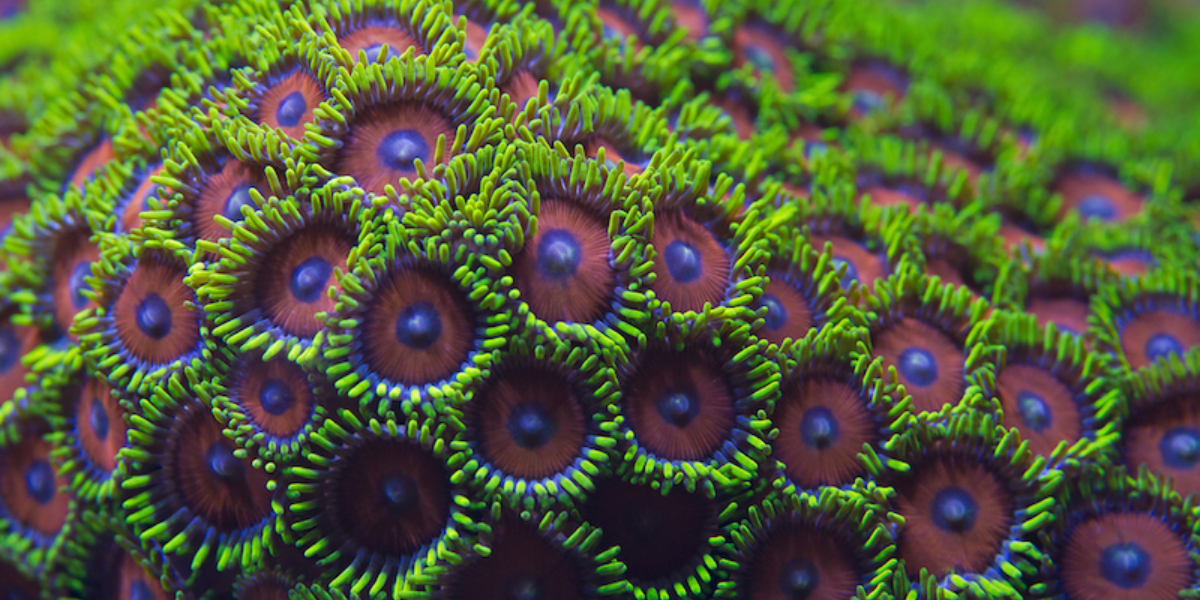
Deadly coral, also known as fire coral, is found in tropical and subtropical waters around the world. It is a colonial organism, meaning that it is made up of many individual polyps. Fire coral can cause a painful sting, and in some cases, it can even be fatal.
Fire coral is found in shallow water, and it often grows in areas where there is a lot of wave action. It feeds on plankton and other small organisms. Fire coral reproduces asexually, by budding
These deadly coral contain a deadly substances called Palytoxin that can cause a severe respiratory reaction, hemorrhaging and leads to death to humans if ingested.
Fire coral is not listed on the IUCN Red List of Threatened Species. However, fire coral is vulnerable to climate change and other environmental factors.
Tropical Fire Ants
Tropical Fire Ants (Solenopsis geminata) pose a unique threat in Thailand, particularly for those susceptible to severe allergic reactions. These ants are not only a nuisance but a health hazard, especially due to their ability to trigger anaphylactic reactions.
Studies have shown that the whole body extract of S. geminata contains 13 IgE-binding components, including 3 major allergens, making them a significant concern for individuals with ant allergies.
The prevalence and impact of Tropical Fire Ants have made them a subject of important research in Thailand. Understanding how to manage and mitigate the risks associated with these ants is crucial, given their potential to cause severe health issues.
Stray Dogs
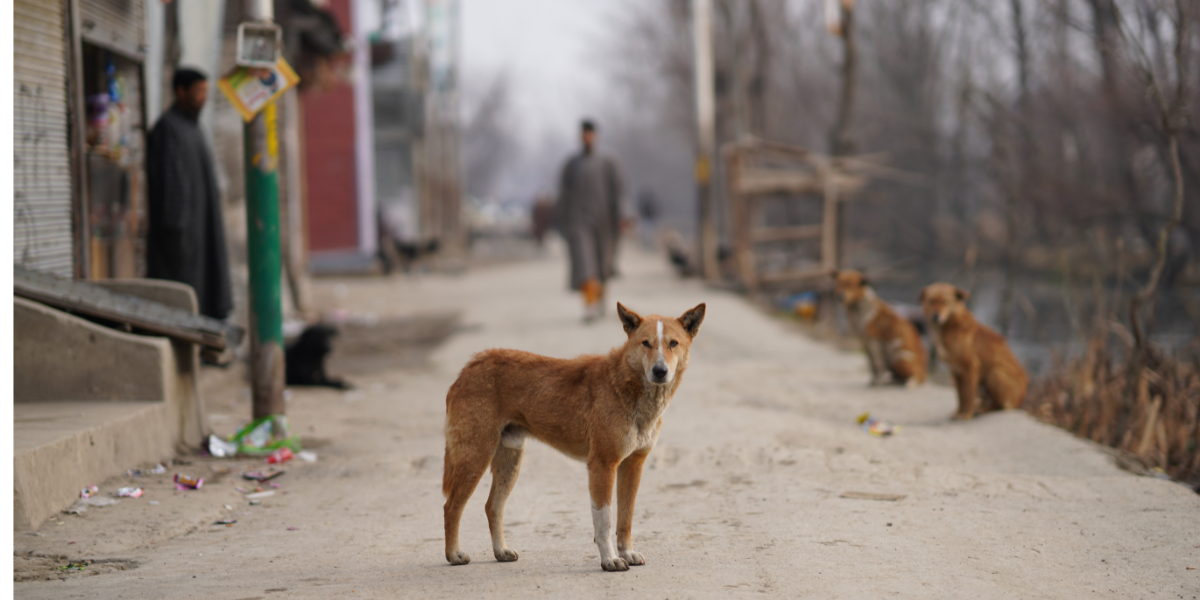
Stray dogs are found all over the world, but they are most common in developing countries. They are often the result of abandonment or neglect, and they can be a nuisance or even a danger to people.
The street canines eat a variety of things, including garbage, food scraps, and even small animals. They are often malnourished and can carry diseases, such as rabies and leptospirosis.
These street dogs breed rapidly, and their numbers can quickly get out of control. They are aggressive, and in many cases they attack people, especially children.
Black Scorpions
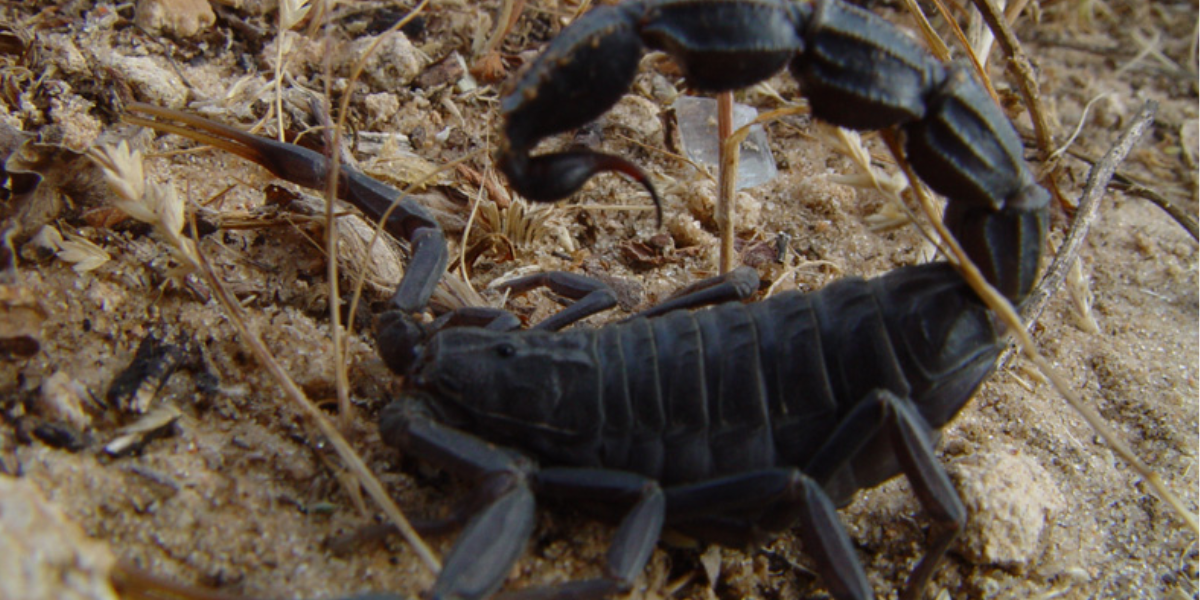
Black scorpions (Heterometrus longimanus) are common dangerous animals in Thailand, found in tropical and subtropical regions of Asia, including India, Pakistan, Sri Lanka, and Southeast Asia. They are large scorpions, reaching up to 10 cm in length. Their venom is not considered to be medically significant, but it can cause pain and swelling.
Black scorpions are nocturnal predators and they eat a variety of insects, spiders, and other small animals. They are also known to scavenge on dead animals.
In breeding season, after mating, the female black scorpion carries her eggs under her abdomen until they hatch. The young scorpions stay with their mother for a few weeks after they hatch.
They are known for their strong pincers, which they use to crush their prey. Black scorpions are not endangered or threatened. These scorpions are common in many parts of their range and they are not considered to be pests.
Scorpionfish
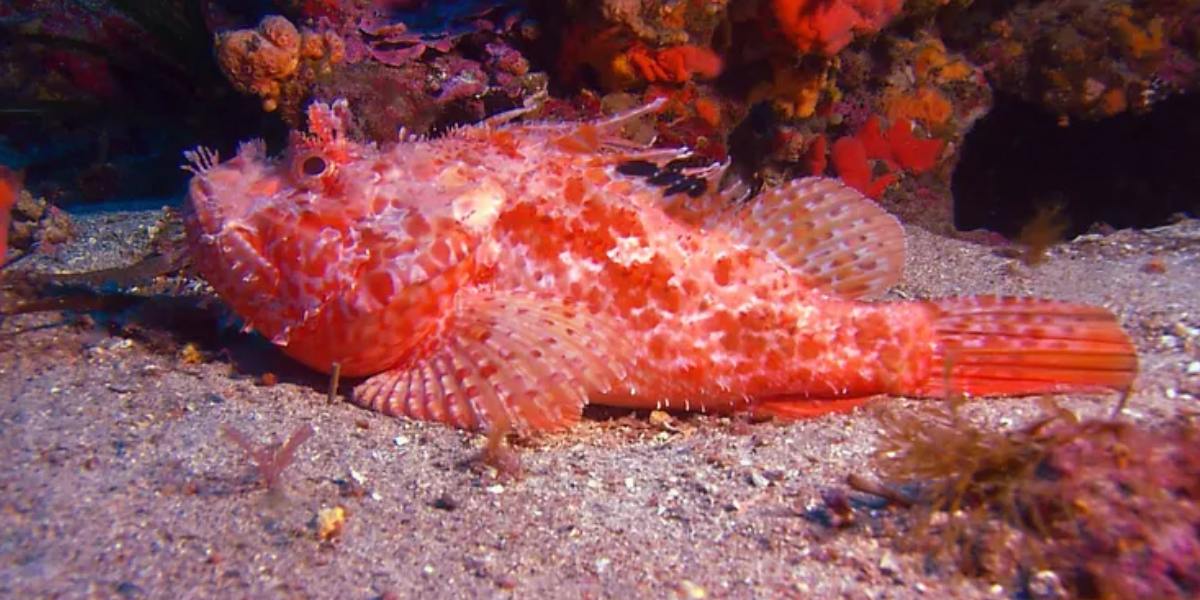
Scorpionfish are found in tropical and temperate seas around the world, but they are most common in the Indo-Pacific region. It is one of the dangerous fish species found in Thailand.
They are bottom-dwelling fish that live in shallow waters, often among rocks or coral reefs. Scorpionfish are carnivores and they eat a variety of small fish, crustaceans, and other invertebrates.
They have sharp spines that are coated with venom, which they use to defend themselves from predators.
Scorpionfish are solitary fish and they only come together to mate. After mating, the female scorpionfish lays her eggs in a nest on the seafloor. The eggs hatch into small fish that are free-swimming from the start.
These fishes are an important part of the marine ecosystem. They help to control populations of small fish and invertebrates, which helps to keep the ecosystem balanced.
Red Lionfish
The Red Lionfish (Pterois volitans) is an enthralling yet dangerous inhabitant of Thailand’s marine environments. Known for its striking appearance, the Red Lionfish features a vibrant, striped body with hues ranging from reddish-brown to black or yellow, and it is adorned with long, venomous dorsal spines used for defense.
Predominantly a twilight predator, this species has the remarkable ability to consume prey over half its size, demonstrating its prowess within the aquatic food chain, which is vital for maintaining balance in Thai waters.
In Thailand, the Red Lionfish is not as prevalent as in some other regions like the Great Barrier Reef, where their populations are controlled to prevent them from overwhelming local reef ecosystems. However, they are still a common sight at various diving locations around Koh Tao, such as Chumphon Pinnacle and Green Rock.
Shark
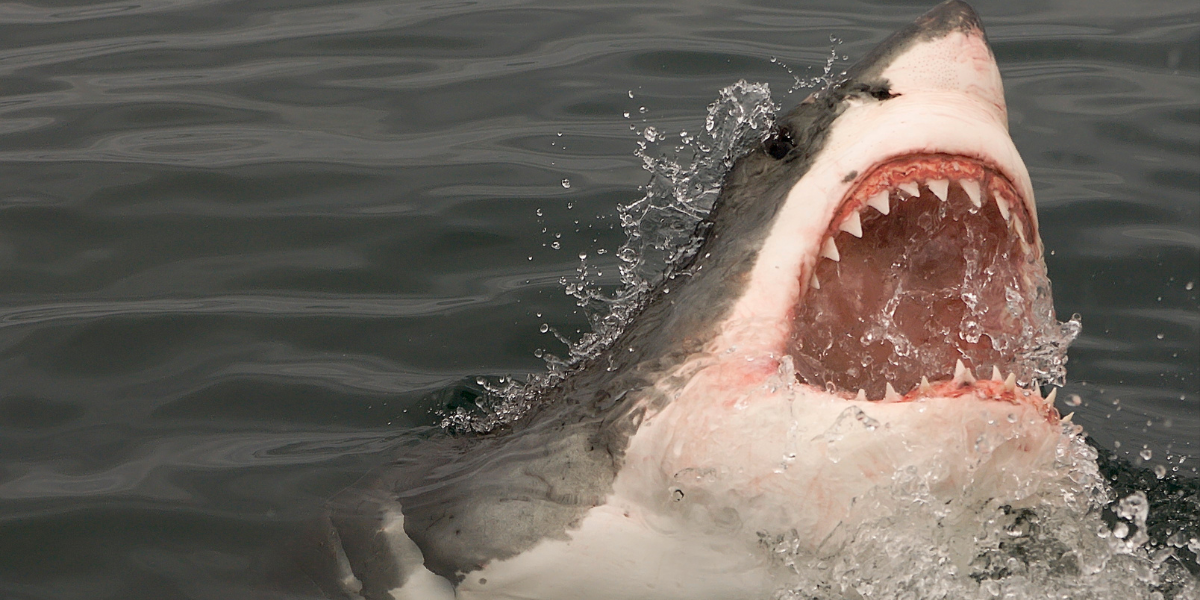
Sharks are found in all the world’s oceans, from the surface to the bottom, and from the poles to the equator. They are apex predators, meaning they are at the top of the food chain.
Sharks eat a variety of animals, including fish, squid, seals, and sea turtles. Some sharks are even cannibalistic, meaning they eat other sharks, and are very aggressive animals.
Sharks reproduce by laying eggs but keep them in their body until their hatching. They produce 20 eggs once a years in their breeding months that start from August till mid November.
Sharks are dangerous species, and an important part of the marine ecosystem. This shark species help to control populations of other animals, and they also help to keep the oceans clean by eating dead animals. However, sharks are also vulnerable to overfishing, and some species are now endangered.
Red Lionfish
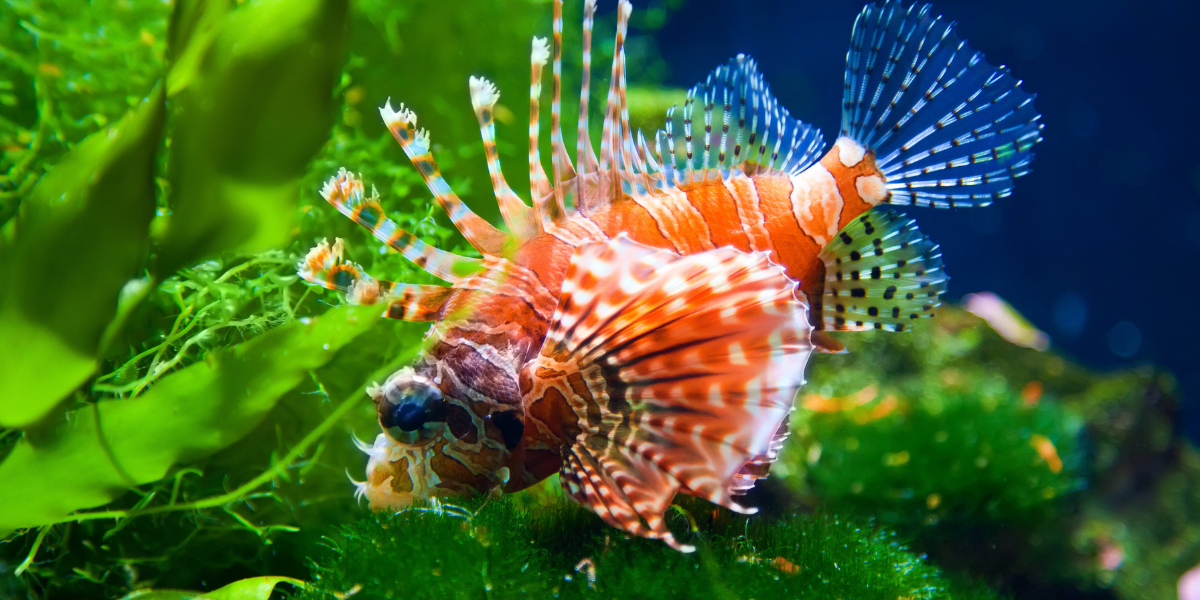
The red lionfish (Pterois volitans) is a venomous coral reef fish in the family Scorpaenidae, order Scorpaeniformes.
It is mainly native to the Indo-Pacific region, but has become an invasive species in the Caribbean Sea, East Coast of the United States and East Mediterranean.
Red lionfish are found in warm, tropical waters, and they can live in a variety of habitats, including coral reefs, seagrass beds, and shipwrecks. They are carnivores and eat a variety of fish, shrimp, and crabs.
Red lionfish gather in groups to spawn. The female red lionfish can lay up to 2 million eggs in a year, and the eggs hatch into larvae that drift with the currents.
Red lionfish are dangerous sea creatures and they are a threat to native fish populations. They are also venomous, and their sting can be painful, but it is rarely fatal.
Yellow Sac Spider
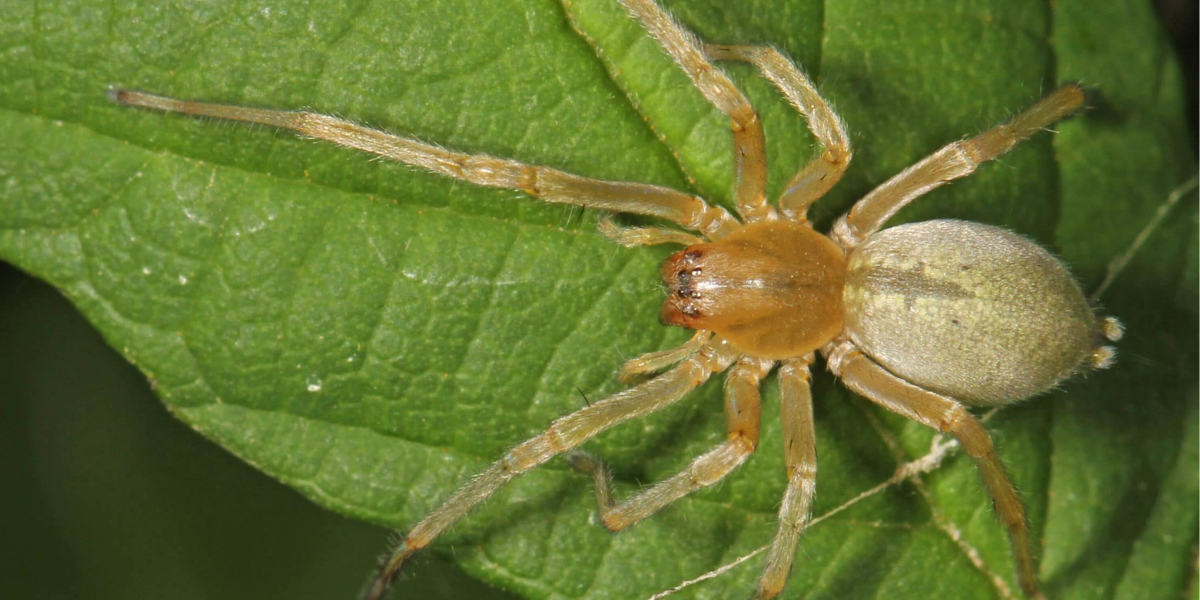
Yellow sac spiders are found in North America, Europe, and Asia. They are small, about 1/4 inch long, and have a pale yellow or green body with dark markings. Yellow sac spiders are nocturnal and they typically build their webs in dark, undisturbed places, such as under furniture, in corners, and in closets.
Yellow sac spiders are dangerous spiders, and carnivorous animals. Their diet consist of insects, flies, mosquitoes, and other spiders. Sometimes they feed on nectar of the flowers.
The female yellow sac spider lays her eggs in a silken sac. The eggs hatch in about 2 weeks and the young spiders disperse.
Yellow sac spiders are not aggressive and they only bite if they feel threatened. Their bite can be painful, but it is not usually fatal.
The IUCN status of the yellow sac spider is Least Concern. This means that they are not considered to be endangered or threatened.
Leeches
In the lush rainforests and damp environments of Thailand’s national parks, such as Kaeng Krachen, Khao Yai, Doi Inthanon, and Khao Sok, leeches are a common yet often unwelcome part of the natural landscape. These blood-sucking parasites thrive in moist areas, particularly near streams and within the dense undergrowth of rainforests, where they wait for potential hosts.
While the thought of leeches may be unsettling, they are an integral component of the ecosystem, contributing to the ecological balance by recycling nutrients and serving as food for other wildlife. To coexist harmoniously with these creatures and enjoy the natural beauty of Thailand’s parks without discomfort, it is advisable to use preventative measures such as wearing leech socks.
This simple precaution can help avoid unwanted encounters with leeches, ensuring a more pleasant experience in these breathtaking natural settings. Respecting and understanding their role in the environment is key to appreciating all aspects of Thailand’s diverse wildlife.
Venomous Pit Vipers
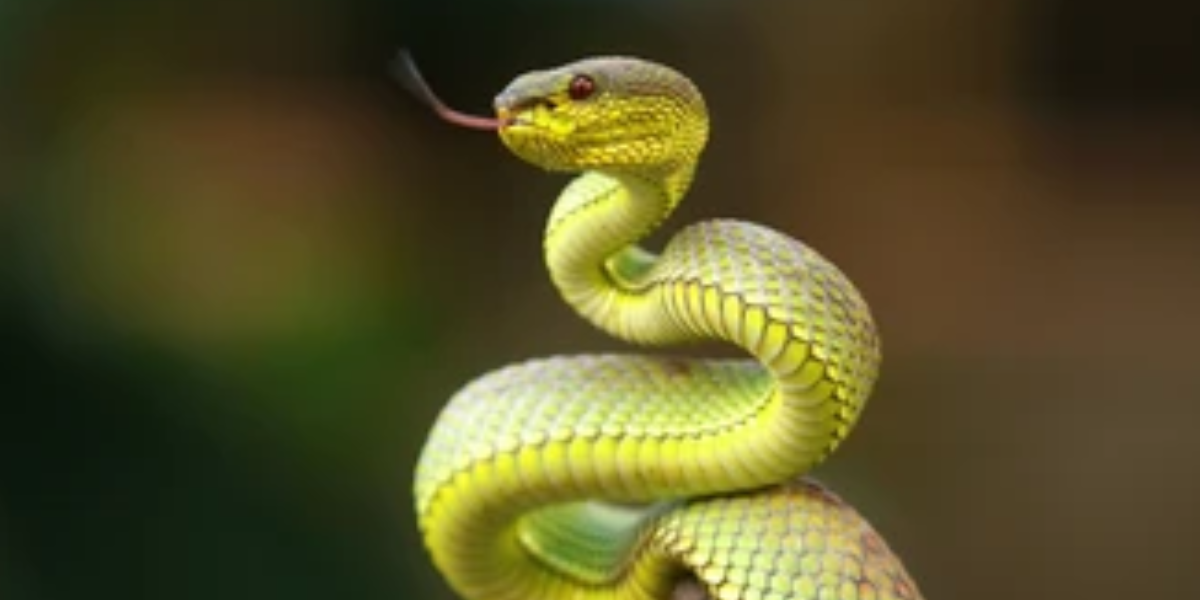
These are poisonous snakes common dangerous animals in Thailand and found in the Americas and Eurasia. Pit vipers are carnivores and they eat a variety of animals, including rodents, birds, and other snakes. They typically ambush their prey and strike with their fangs, injecting venom that paralyzes or kills the prey.
Pit vipers are ovoviviparous, meaning that the eggs hatch inside the mother’s body and the young are born live. The young are typically independent from birth.
Some pit vipers, such as rattlesnakes, have a rattle that they use to warn predators. Pit vipers are an important part of the ecosystem and they help to control rodent populations.
Saltwater Crocodiles
Saltwater crocodiles, the largest living reptiles, are formidable predators found in Thailand’s coastal regions, beaches, and rivers. Reaching up to 23 feet in length and weighing over 1,000 kilograms, they are known for their aggressive nature.
Their powerful bite and lethal “death roll” technique make them highly dangerous, especially when provoked. Although attacks on humans are rare, they can be fatal.
It is vital to observe these creatures from a safe distance, as their territorial instincts can lead to aggressive behavior if threatened.
Wild Elephants

Wild elephants in Thailand, though revered in the local culture, pose significant risks due to their size and strength. These massive creatures are typically peaceful, but they can become aggressive if they feel threatened or perceive danger to their young.
Encounters with wild elephants are common in national parks. Therefore, maintaining a safe distance and adhering to guidelines from local guides is crucial to avoid dangerous confrontations.
Respecting their space ensures the safety of both humans and these majestic animals.
Macaque Monkeys
Macaque monkeys, often found in urban areas and temples across Thailand, can pose a danger to humans. Despite their playful appearance, they can become aggressive, especially when they feel their territory is being encroached upon or if they are fed by humans.
Incidents involving bites and scratches are reported annually, particularly in tourist areas. To prevent aggressive behavior, it’s advisable to keep personal belongings secure and avoid direct interactions with these opportunistic primates.
Mosquitoes
Mosquitoes in Thailand are not only a nuisance but also a significant health risk. These insects are vectors for diseases such as dengue fever, malaria, and the Zika virus.
They thrive in Thailand’s warm, humid climate, making mosquito-borne illnesses a common concern. Travelers are strongly advised to use insect repellent, wear protective clothing, and stay in accommodations with proper screening to reduce the risk of bites.
Prevention is key to minimizing the health risks posed by mosquitoes in this region.
Dragonfish

Dragonfish, known for their bioluminescent abilities and predatory nature, are found primarily in deep waters around Thailand. While they pose little direct threat to humans, their sharp teeth and aggressive feeding habits make them dangerous hunters in their environment.
Although encounters with dragonfish are rare, they highlight the diversity of Thailand’s marine life. Caution is recommended when swimming or diving in deeper waters where these creatures might be present.
Monocled Cobra
The monocled cobra is one of Thailand’s most venomous snakes, easily recognized by the distinctive circular mark on its hood. Found in forests, agricultural lands, and even urban areas, this snake can be aggressive when threatened.
Its venom can cause severe pain, swelling, and, if untreated, can be fatal. Caution is essential when walking or hiking in areas where cobras may be present, and immediate medical attention is crucial in the event of a bite.
Malayan Krait
The Malayan krait, with its striking black-and-white banding, is another highly venomous snake in Thailand. This nocturnal predator is often found in rural areas, increasing the possibility of human encounters. Its venom is neurotoxic, causing paralysis and respiratory failure if not treated promptly.
Since the bite may initially be painless, symptoms can escalate quickly, underscoring the need for vigilance and immediate medical attention in the event of an encounter.
Staphylinidae Beetles

Staphylinidae beetles, commonly known as rove beetles, are not typically dangerous but can cause skin irritation if handled. Some species of these beetles possess defensive secretions that can lead to mild skin reactions.
While these beetles are mostly harmless, exercising caution when interacting with any wild insect is recommended, as allergic reactions can occur. Awareness of local insect fauna helps in minimizing potential risks during outdoor activities in Thailand.
National animal Thailand
Elephant is the national animal of Thailand. Elephants have been used in Thailand for centuries for transportation, warfare, and religious ceremonies.
How to Stay Safe From Dangerous Animals of Thailand?
Staying safe from dangerous animals in Thailand requires preparation, awareness, and respect for the natural environment. By following these practical safety tips, you can reduce the risk of encounters with potentially harmful wildlife.
- Clothing and Footwear Always wear closed shoes and long pants when exploring nature, especially in areas with tall grass, forests, or underbrush. This protective clothing can minimize the risk of bites or stings from snakes, insects, or other small creatures that often go unnoticed. Proper attire acts as a barrier, making it less likely that an animal’s venomous bite will penetrate your skin.
- Stay Alert Remain vigilant when walking in regions where dangerous animals might be present, such as forests, grasslands, or near water sources. Using a stick to tap the ground ahead of you can help alert snakes and other animals to your presence, giving them a chance to move away. This simple technique can prevent unwanted encounters, as many animals will choose to avoid humans if given the opportunity.
- Avoid Certain Areas It’s wise to avoid walking through long grass, dense jungles, or other areas where animals may be hiding, especially during nighttime when many creatures are more active. These areas can increase your risk of accidental encounters with snakes, scorpions, or other animals that prefer to stay hidden. Being mindful of your surroundings and avoiding risky locations can significantly reduce potential dangers.
- Do Not Disturb Wildlife If you come across a snake or another dangerous animal, do not attempt to touch, provoke, or corner it. Wildlife is often unpredictable, and animals may act defensively if they feel threatened. Instead, slowly and calmly back away, giving the animal space to retreat. Respecting wildlife’s natural behavior is essential for your safety.
- Seek Medical Attention In case of snake bites or stings, seek medical attention immediately, even if the injury appears minor. Venomous bites and stings can lead to severe allergic reactions or infections, and prompt medical treatment like anti-venom is crucial to prevent complications. Quick action can make a significant difference in recovery outcomes.
- Educate Yourself Familiarize yourself with the local wildlife and potential hazards before venturing into natural areas. Learning to identify dangerous animals and understanding their behavior can help you avoid risky situations. Awareness is a key factor in staying safe, and knowing what to expect will prepare you to react appropriately in case of an encounter.
Frequently Asked Questions
What are the important animals in Thai culture?
Elephants are important in Thai culture.
What are common animals in Thailand?
Malaysian sun bears, sambars, deer and otters are some common animals found in Thailand.
What is the largest snake in Thailand?
Reticulated python is the largest sake in Thailand
What is the main animal in Thailand?
The elephant is the main animal elephant in Thailand.
- What Should I Do If A Koala Bites Me? Safety Guide - 2024-05-30
- Are Kangaroos Born Without Hind Legs? A Fascinating Journey - 2024-05-30
- Animals That Look Like Squirrels - 2024-05-30



